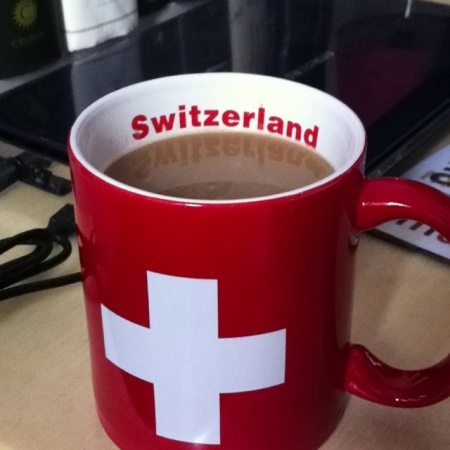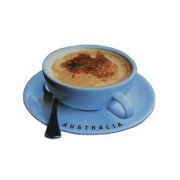Hartman Manor in Panama single bean species, brand recommendation and manor introduction

For professional baristas, please follow the coffee workshop (Wechat official account cafe_style)
Hartman Manor in Panama single bean species, brand recommendation and manor introduction
Kaddura, a single gene variant of Bourbon bourbon, was found in Brazil in 1937. It has better production capacity and disease resistance than bourbon, and the tree is shorter and easy to harvest. Unfortunately, like bourbon, it has the periodic problem of production capacity fluctuation every two years. But its adaptability is strong, do not need shade trees, direct exposure to the sun can also be full of vitality, called exposure coffee (Sun Coffee), can adapt to high-density planting, but must apply more fertilizer, increase the cost, so the acceptance of coffee farmers is not high in the initial stage.
But soybean prices soared in the 1970s, and farmers switched to Kaddura to increase production, which was vigorously promoted by the Brazilian and Colombian authorities and yielded fruitful results. The acceptance of Kaddura by farmers means a great change in planting technology. Brazil and Colombia switched to high-yield, high-density sun-exposed planting. by 1999 ○, 14 million bags of coffee beans could be harvested on 1 million hectares, increasing production capacity by 60%. No wonder Kaddura, with high production capacity and high quality, has become a variety relied on by various producing countries.
Kaddura is suitable for planting in the high altitude area from 700m to 1700 m. The adaptability to altitude is very strong. The higher the altitude, the better the flavor, and the production capacity is relatively reduced. This is the fate of fine beans. In academic circles, some people call Kaddura the bourbon of dense and exposed version, which can be said to hit the nail on the head. There is also a variety of yellow Kaddura (Caturra Amarello) in Central and South America, but the wind rating is not as good as Huang bourbon.
When Kaddura is slightly roasted, the sour aroma is obvious and the whole is bright. If handled properly, the sweetness can be very good, but the mellowness of coffee is relatively low compared with bourbon, and the cleanliness of the taste is a little less.
Kaddura usually has red berries, but there are very few areas with yellow Kaddura, such as Hawaii, where there are very few yellow Kaddura.
Hartman by hand. 15g powder, medium grinding (small Fuji ghost tooth cutter 4 grinding), v60 filter cup, 88-89 degrees water temperature, 30g water injection for the first time, steaming for 27 seconds, water injection to 105g water cut off, wait for the amount of water in the powder bed to reach half and then water injection, slow water injection until 225g water, no water powder ratio at the end, 1:15, extraction time 2:00
Country: Panama
Grade: SHG
Producing area: Walken producing area
Altitude: 1250-1700 Meters
Treatment method: red wine treatment
Variety: Kaddura
Manor: Hartman Manor
Flavor: smoked wood spices, berries, fruit wine
Kaddura red wine treatment of Hartmann Manor in Panama
Factory name: Qianjie Cafe address: No. 10 Baoqian Street, Yuexiu District, Guangzhou City, manufacturer contact: 38364473 ingredients Table: self-baking shelf life: 30 net content: 227g packaging: bulk taste: neutral coffee beans ripe degree: coffee cooked beans contain sugar: sugar-free origin: Panamanian coffee types: other roasting degree: moderate roasting
Introduction to Hartman Manor
Hartman's story, like his coffee, is legendary. Hartman Manor is located in Chilidge, Santa Clara. The founder is called Mr.Alois St. Hartmann (Luis Hartmann). He was born on June 20, 1891 in the Moravilla region of Austria and Hungary in what is now the Czech Republic, and died on May 25, 1970 at the age of 78.
After the beginning of World War I, he was abandoned as a little boy. Thanks to his mother, he was able to hide in a ship bound for Pennsylvania and survived. Both of his brothers died in the war after joining the army. Luis Hartmann and his friends traveled to some countries until he came to Panama in 1911 and settled in Chiriki province in 1912, mainly in the Kendra region. He built his first cabin in the primeval forest.
Today's Hartman Manor is a family business founded by Latip Hartman (son of Eloise) in 1940. In 1966 Latip married Dinola Sandy of Costa Rica. They have five sons, Latipa Jr., Alan, Alexander, Alice and Kelly. Each family member is responsible for the growth management, harvesting and handling of the coffee and the visit to the manor. A family estate that has grown coffee for more than 100 years is a legend in itself.
The family business has a state cup testing laboratory and a sample baking room. Rigorous cup test of each batch of coffee fruit. This ensures that the coffee quality at Hartman Manor is stable and is always looking for progress. Their scientific attitude towards coffee and nearly 100 years of family experience ensure their excellent production.
A legendary manor with a continental cup testing laboratory and a sample baking room. Yan Jin's attitude and strict standards ensure the stable quality of coffee at Hartman Manor.
This batch is Kaddura seed treated with red wine, which exudes super strong fruit wine aroma as soon as it is ground, accompanied by fresh aroma of smoked wood, and special sweet aroma of berries in the sun. After the entrance, it is accompanied by rich tropical fruit flavors, such as passion fruit, mango, orange and berry fruit juice and peach wine cocktail! No, this is a cocktail from nature!
At present, of all the coffee producing areas on the earth, very few red wine-like treatments have been successfully tested. After years of testing, this treatment has finally been able to control the acidic structure of coffee. Fermented coffee similar to red wine treatment greatly enhances the sweetness, cleanliness and multi-level complex and elegant acidity of the coffee. This fermentation method greatly improves the quality and uniqueness of coffee products.
Red wine treatment, also known as controllable fermentation, or lactic acid / acetic acid fermentation
The team, led by American Felipe Sardi, is made up of bioscientists and ecologists who use technologies such as solar energy to cultivate and process raw beans.
Special manual picking teams have been trained and picked strictly in accordance with the picking requirements of boutique coffee beans: immature fruits < 2%, defective beans < 3%, floating beans < 5%.
Acetic acid fermentation-aerobic fermentation
Lactic acid fermentation-anaerobic fermentation
Expectations for the taste:
Acetic acid fermentation: cleaner, more lively acid, brighter acid, citric acid
Lactic acid fermentation: taste more round, less cleanliness than acetic acid fermentation, higher alcohol thickness, malic acid / tartaric acid
Prior to this, the treatment plants used manual operations handed down from generation to generation, such as biting to feel the degree of fermentation of coffee beans. This kind of fermentation is uncontrollable and changeable.
The fermentation method can be controlled to monitor the fermentation degree by controlling the PH value. In order to achieve predictable results, and consistent production of each batch.
Hartman Manor washing Hartmann Estate Washed
■ country: Panama
■ producing area: Walken
■ altitude: 1250-1800 m
■ treatment: washing
■ level: SHB
■ variety: Arabica
■ flavor description: drupe, cream, vanilla and herb tail rhyme
Hartman Manor Solar Hartmann Estate Natural
■ country: Panama
■ producing area: Walken
■ altitude: 1250-1800 m
■ treatment: insolation
■ level: SHB
■ variety: Arabica
■ flavor description: wine aroma, fruit juice, grape, longan
Hartman Pacamara Sun Hartmann Estate Pacamara Natural Hartman Manor Pacamara Sun
■ country: Panama
■ producing area: Walken
■ altitude: 1250-1800 m
■ treatment: insolation
■ level: SHB
■ variety: Pacamara
■ flavor description: dried fruit, smoking, cardamom spices, onion, melon and fruit aromas
Hartman geisha sun Hartmann Estate Geisha Natural Hartman Manor geisha sun
■ country: Panama
■ producing area: Walken
■ altitude: 1250-1800 m
■ treatment: insolation
■ level: SHB
■ breed: geisha
■ flavor description: citrus, melon and fruit aromas, tropical fruits
Hartman Manor is a coffee farm run by the Hartmann family.
The founder of the manor is Alois Strasil Hartmann.
He came to the Boquete district of Panama around 1918 to start his planting career.
Hartman Manor currently has two coffee farms, Ojo de Agua and Palo Verde.
It's about two miles from each other. Ojo de Agua's coffee is planted under shade trees.
Many areas in the manor are virgin forests.
It is also famous for spanning Costa Rica and Panama.
One of the buffer zones in La Amistad Forest Reserve
The average elevation falls between 1220 and 1828 meters.
The mud road in the manor leads to the native habitats of various animals and plants.
Very suitable for bird watching, hiking and exploration.
Palo Verde Farm is known as Hartman Manor.
The coffee grown here also grows under the shade trees of the rainforest.
The average altitude is 1250 meters above sea level, and the average annual temperature is between 12.7 and 26.6 degrees.
Annual rainfall of 4500 cm
There are dirt roads extending in all directions in the manor
There is also a small museum with a collection of insect specimens and local handicrafts.
Panama Panama
Population: 3406000
Coffee in Panama is defined by how it is produced, not by geography. In the past, when coffee was widely cultivated, when the areas listed below were small and tightly clustered, the coffee beans could be combined into one unit.
BOQUETE
Bockett is the most famous Panamanian area. Its mountainous terrain creates many microclimates. Cool weather and frequent fog help slow the ripening of coffee cherries, similar to what some people think is a high-altitude climate.
Altitude: 400-1900m
Harvest: December-March
Breed: Typica,Caturra,Catuai, bourbon, geisha, San Ramon
VOLCAN-CANDELA
Mount Kendra produces most of the Panamanian food and some amazing coffee in this area. The region is named after the cities of Baru and Piedra Candela, which borders Costa Rica.
Altitude: 1200-1600m harvest: December-March
Breed: Typica,Caturra,Catuai, bourbon, geisha, San Ramon
RENACIMIENTO
Renacimiento is a producing area in the province of Chiriqui, bordering Costa Rica. The area itself is relatively small, so it is not the main specialty coffee producing area of Panama.
Altitude: 1100-1500m
Harvest: December-March
Breed: Typica,Caturra,Catuai, bourbon, geisha, San Ramon
Panama Hartmann Estate of Hartmann Manor in Panama
When it comes to Panamanian coffee tradition, most of the boutique coffee producing areas that are familiar to the public come from Boquete, but in recent years, coffee from Volcan has gradually emerged in the boutique market, and at the same time, a considerable number of estates have entered the best Panama competition (Best of Panama) or even won the championship. Generally speaking, the average annual rainfall in Walken is less than that in Borquette. At the same time, the geographical environment located to the west of the Baru volcano also gives coffee a stronger dried fruit flavor, sweetness and aroma than the Boguet region. In the early days, most of the cash crops such as fruits and vegetables were grown in Walken, and only a few farmers grew coffee, among which the pioneer of coffee cultivation in Walken belonged to the Hartman family, which was well-known in Panama.
The story of the Hartmann family in Panama can be said to be a long history of European immigration. Alois Strasil Hartmann was born in the Austro-Hungarian Empire at that time, that is, the present-day Czech Republic. Later, due to the unstable national politics, Alois decided to start a new life outside the country. At first, Alois stayed in New York and then moved to Panama, but after a few months, Alois found that he was not adapted to the urban life of Panama City. DNA, who had always had adventures in his blood, decided to work and settle down along the mountain line to the Walken area shortly after quitting his job. He also married his first wife Susana Troetsch and gave birth to Hartmann Troetsch, the founder of Hartman Manor. Hartmann Troetsch inherited his father's farmland and began land preparation work in 1940, and then started the history of Hartman Manor to this day. During the initial reclamation, the old Hartman decided to retain most of the original woodland in the manor, and this concept of primary forest protection has always influenced the third generation of manor owners who are now in charge of management. Hartman Manor still maintains this tradition. The coffee planting land in the manor accounts for only about 20% of the whole manor. due to the results of woodland conservation, there are quite a lot of native birds in the manor. And the most famous big-billed bird in the area has naturally become the standard Logo of the manor.
At present, the five children of Hartmann Troetsch handle the large and small affairs of Hartman Manor, among which the eldest Ratibor and Kelly are mainly responsible for the planting, breeding and fertilization of coffee in the park, which is the soul of Hartman Manor. In addition to its own estate, the Hartmann family also provides management services for estates near Volcan. For example, Ninety Plus's estate in Panama has maintained a close relationship with the Hartmann family to manage various matters within the estate.
The Eye of Water has always been a favorite area in Hartman Manor, which is located at a high altitude in the manor and its annual output is very rare. at present, only a few varieties of geisha, Kaddura and Kadui are planted in this area. the manor has a total area of 120 hectares, of which only 20 hectares are used as planting land. Another estate, named Santa Clara, is the site of Hartman's washing plant in addition to serving as a coffee farm and nursery plant. it is also an area where landowners experiment with the flavor of different varieties, with a total of more than ten varieties currently being tested and more if potential varieties are planned for future planting.
Important Notice :
前街咖啡 FrontStreet Coffee has moved to new addredd:
FrontStreet Coffee Address: 315,Donghua East Road,GuangZhou
Tel:020 38364473
- Prev

Grading, price, raw bean and baking curve of single bean at Hartmann Manor in Panama
For the exchange of professional baristas, please follow the coffee workshop (Wechat official account cafe_style) Hartman Manor Hartman Manor Panama single bean classification, price, raw beans and roasting curve hand-made Hartman. 15g powder, medium grinding (small Fuji ghost tooth cutter 4 grinding), v60 filter cup, 88-89 degrees water temperature, 30g water injection for the first time, steaming for 27 seconds, injection to 105g water cut off, wait for powder bed
- Next

The history, culture and story allusions of the holy boutique beans of Hartmann Manor in Panama
Professional barista exchanges please follow the coffee workshop (Wechat official account cafe_style) Panama Hartman Manor Saint boutique beans history and culture, stories and allusions Panama Hartman Manor Panama Hartmann Estate mentioned the Panamanian coffee tradition, the public are familiar with the boutique coffee producing areas are mostly from Boquete, but in recent years, Walken (V)
Related
- Does Rose Summer choose Blue, Green or Red? Detailed explanation of Rose Summer Coffee plots and Classification in Panamanian Jade Manor
- What is the difference between the origin, producing area, processing plant, cooperative and manor of coffee beans?
- How fine does the espresso powder fit? how to grind the espresso?
- Sca coffee roasting degree color card coffee roasting degree 8 roasting color values what do you mean?
- The practice of lattes: how to make lattes at home
- Introduction to Indonesian Fine Coffee beans-- Java Coffee producing area of Indonesian Arabica Coffee
- How much will the flavor of light and medium roasted rose summer be expressed? What baking level is rose summer suitable for?
- Introduction to the characteristics of washing, sun-drying or wet-planing coffee commonly used in Mantenin, Indonesia
- Price characteristics of Arabica Coffee Bean Starbucks introduction to Manning Coffee Bean Taste producing area Variety Manor
- What is the authentic Yega flavor? What are the flavor characteristics of the really excellent Yejasuffi coffee beans?

